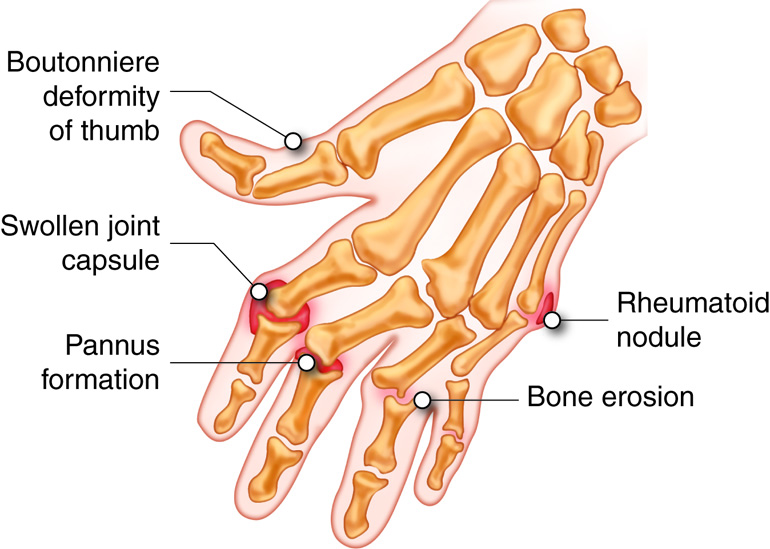31 Skeletal Integration of Systems
The homeostatic control of blood (plasma) calcium levels requires interactions between several body systems. Roughly 1000 mg of calcium per day is taken into the body by ingestion, 350 mg of calcium per day is absorbed into the digestive system and the rest is excreted. Of the calcium absorbed by the digestive system and from there into the cardiovascular system, some is processed through the urinary system. Calcium exchange between cells, extracellular fluid and the bones is partly regulated by the endocrine system, which directs bone degradation if more calcium is needed in other parts of the body. The endocrine system also stimulates osteoclasts, which are cells derived from the precursor cells of the immune system. The calcium liberated by the bones is used by the nervous system and the muscular system to keep many of their functions working appropriately.
Systems within the body are integrated with respect to dysfunction as well. Osteoarthritis is the most common form of arthritis, and as you have learned, it is caused by mechanical damage to the cartilage. Rheumatoid arthritis, in contrast, is an autoimmune disease—that is, a disease in which the body’s immune system attacks normal tissue. In rheumatoid arthritis, the immune system attacks healthy cartilage and synovial membranes.

Immune cells attack the synovial membranes in synovial joints, causing inflammation. As the membrane becomes inflamed and thickened, synovial fluid begins to accumulate in the joints. The joints can become swollen and painful, and it becomes more difficult for the bones in the joint to slide past one another. Over time, fibrous tissue forms in the joint. Eventually, the fibrous tissue fuses the two bones together, preventing the joint from moving.

